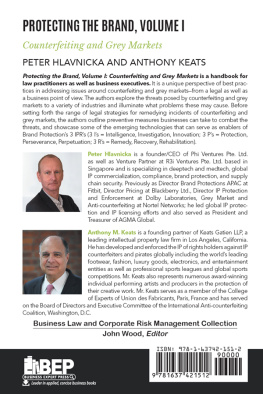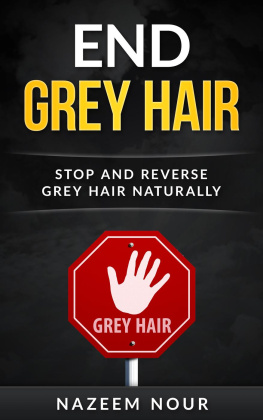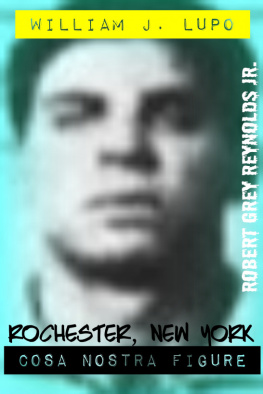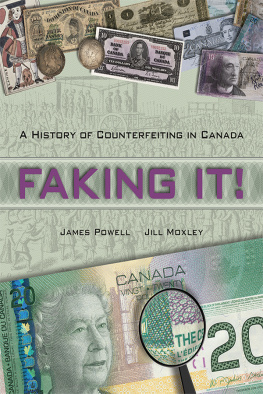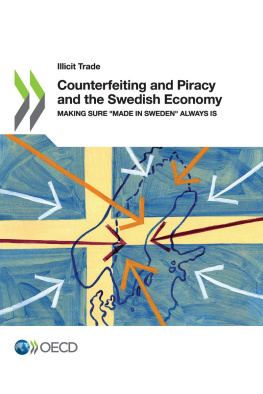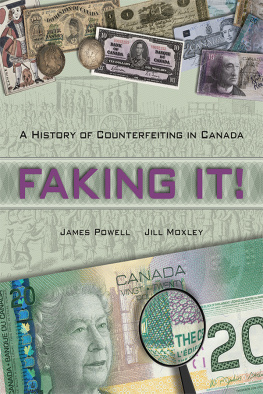Protecting the Brand
Volume I
Protecting the Brand
Volume I
Counterfeiting and Grey Markets
Peter Hlavnicka and Anthony M. Keats

Protecting the Brand, Volume I: Counterfeiting and Grey Markets
Copyright Business Expert Press, LLC, 2022.
Cover design by Charlene Kronstedt
Interior design by Exeter Premedia Services Private Ltd., Chennai, India
All rights reserved. No part of this publication may be reproduced, stored in a retrieval system, or transmitted in any form or by any meanselectronic, mechanical, photocopy, recording, or any other except for brief quotations, not to exceed 400 words, without the prior permission of the publisher.
First published in 2021 by
Business Expert Press, LLC
222 East 46th Street, New York, NY 10017
www.businessexpertpress.com
ISBN-13: 978-1-63742-151-2 (paperback)
ISBN-13: 978-1-63742-152-9 (e-book)
Business Expert Press Business Law and Corporate Risk Management Collection
Collection ISSN: 2333-6722 (print)
Collection ISSN: 2333-6730 (electronic)
First edition: 2021
10 9 8 7 6 5 4 3 2 1
Description
Protecting the Brand, Volume I: Counterfeiting and Grey Markets is a handbook for law practitioners as well as business executives. It is a unique perspective of best practices in addressing issues around counterfeiting and grey marketsfrom a legal as well as a business point of view. The authors explore the threats posed by counterfeiting and grey markets to a variety of industries and illuminate what problems these may cause. Before setting forth the range of legal strategies for remedying incidents of counterfeiting and grey markets, the authors outline preventive measures businesses can take to combat the threats, and showcase some of the emerging technologies that can serve as enablers of Brand Protections 3 IPRs (3 Is = Intelligence, Investigation, Innovation; 3 Ps = Protection, Perseverance, Perpetuation; 3 Rs = Remedy, Recovery, Rehabilitation).
Keywords
intellectual property; trademarks; brand protection; counterfeiting; grey market; parallel import; best practices; case law; prevention; commercial secrets; cybersquatting; remedies; procedures; enforcement; law practitioners; business leadership; Lanham Act; global brand; technology; online; websites; copyrights
Contents
The authors, clearly experts in their field, have provided a very useful guide for counsel, business executives and IP professionals faced with counterfeiting and grey-market challenges. I highly recommend this book.Brian Monks, VP & Chief Security Officer at UL LLC
If you are involved in Brand Protection, you need this book!
It is packed with practical information, including ways to leverage new technologies to support your work. And, it cuts through the clutter around a myriad of services that may assist you, helping you find the right fit for your organization.Jacqueline A. Leimer, former Vice President and Associate General Counsel, Global Intellectual Property, Kraft Foods; former President, International Trademark Association
Tony Keats is one of the top anticounterfeiting lawyers in the world. This book is an invaluable resource on anticounterfeiting and one of the only such guides available to practitioners as well as academics.Barbara Kolsun, Director of the FAME Program and Professor of Practice, Cardozo Law School
A must-read book for any leader or start-up entrepreneur navigating in an age of IP warfare. Peter Hlavnicka is a global expert in IP, Brand Protection and Anti-Counterfeiting and clearly explains his craft from concept to theory to practical execution for any novice or advanced reader.Leesa Soulodre, General Partner R3i Ventures Pte. Ltd. and Singapore Management University Adjunct Faculty Member
There are many good books discussing brand protection, the grey market, and counterfeit goods. These books generally take a narrow approach to individual subjects and are typically intended for strictly legal or strictly business practitioners.
This book provides a unique combination of legal and business best practices related to intellectual property protection and in more detail with respect to two specific threatsgrey marketing and counterfeiting. The primary emphasis is on providing advice to U.S. companies about how to navigate the complex domestic as well as global intellectual property terrain. This book also serves as a single source of reference for both law practitioners (educating them about the nonlegal remedies available to their clients) and any person or team tasked with intellectual property rights enforcement and compliance. Specifically, this book focuses on leveraging trademark enforcement while also commenting on copyright and patent enforcement, establishing a framework for successful brand protection in the future.
We would like to express our gratitude, thanks, and acknowledge all those who contributed to the writing of this book.
Important contributions were made by a number of our colleagues who assisted in all the ways, large and small, necessary to produce a work of this scope. We would like to thank the attorneys, legal assistants, and researchers at Keats Gatien LLP, including Konrad Gatien, Matthew Graham, Darrell Orme Mann, and Brett Voets. We would also like to acknowledge all of our colleagues at Fitbit (acquired by Google), Dolby Laboratories, UL LLC., R3i Ventures, and many others who share the same passion for protecting intellectual property rights, as well as to Ryan Drimalla for his contribution to the topic of Cybersquatting and to our peers at the International Anticounterfeiting Coalition, International Trademark Association, and Union des Fabricants.
Many thanks to Business Expert Press for the opportunity to publish this book and to our editors, Scott Isenberg and John Wood, for their guidance.
Our deepest gratitude goes to our families, friends, and clients for their continued support in all our endeavors.
Intellectual Property (IP) is an integral and invaluable building block of many industries. It is an intangible key asset and a primary method for securing business return-on-investment (ROI) from innovation and reputation. Besides protecting a companys innovations from competitors (including counterfeiters), IP assets are also an important source of cash-flow through licensing arrangements or sales. For start-ups, in particular, IP is also a significant asset by which to attract investors.
In addition, IP is a significant ingredient in a companys ethos or brand. Brands are the means by which goods and service providers develop relationships with consumers. Brands are often described as having strong or weak equity. This equity has been defined by such factors as consumer loyalty, consumer awareness, association with quality, societal relevance, consumer engagement, and leadership among peers. Counterfeiting and grey markets dilute the equity of the brand by interfering and often destroying the factors noted above.
What Are IP Assets?
Patents, trademarks, copyrights, designs, trade secrets, including confidential and proprietary (business critical) information such as product specifications, new product release plans, marketing, pricing, client and customer confidential information.
The survival of many companies depends on robust and diverse measures to protect it. Companies proactively investing in securing their IP from the beginning will benefit enormously in the long run.

